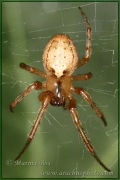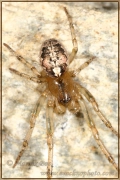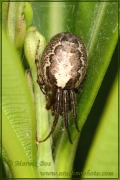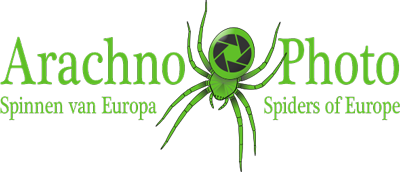As the English name implies, these spiders build orb webs. The web has a closed hub and a signal thread leading to a retreat, for example, under an adjacent leaf. The spiders have strong teeth, which they use to chew on their prey and drench it with digestive juices. Finally, all that remains of the prey is an indefinable clot. In Europe about 140 species can be found.
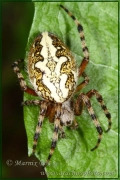
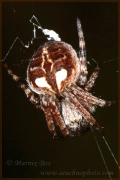
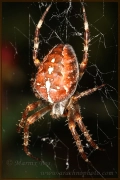
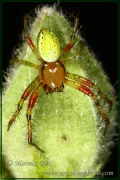
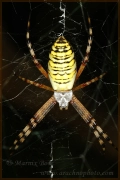
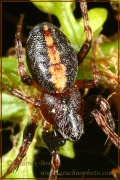
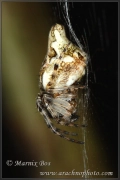
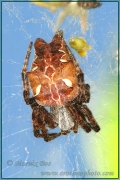
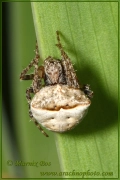
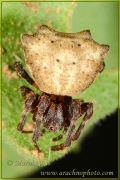
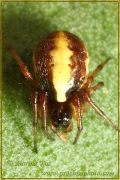
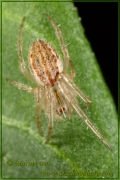
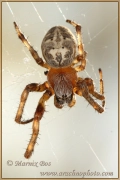
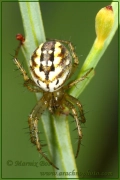
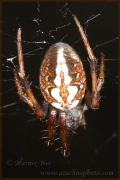
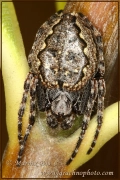
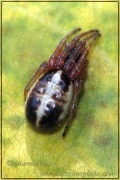
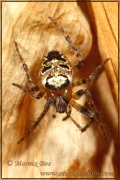
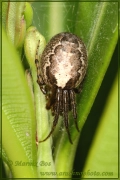
Genus Aculepeira
The spiders of this genus can be distinguished from the other genera belonging to the Araneidae by the abdomen that has an elliptical shape with a typical leaf-like pattern. They build an orb web with a dense white felt-like weave within the hub. The dish-shaped retreat is lined with dense silk as well. In the same family a very similar genus exists: Neoscona. The spiders of this genus, however, are clearly smaller than those of the genus Aculepeira.
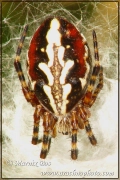
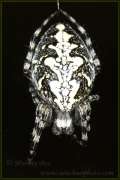
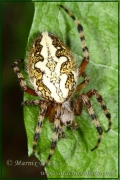
Genus Agalenatea
The red-brown abdomen of these spiders is broader than long and in some females it even looks circular. Like the other Araneidae they build a (large) orb web with a dense hub
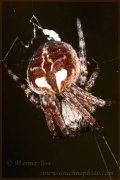
Genus Araneus
The best known spiders undoubtedly belong to this genus, including the European Garden Spider (Araneus diadematus) which is probably known by everyone. The spiders build a large orb web, that sometimes can even be almost 50 cm in diameter. Some species have distinct shoulder lumps.
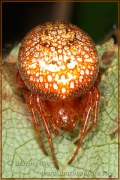
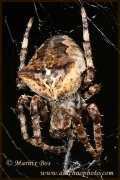
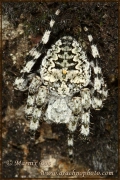
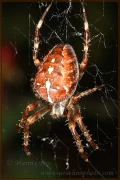
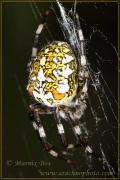
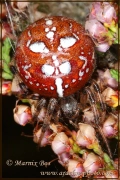
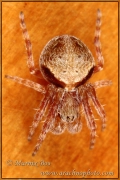
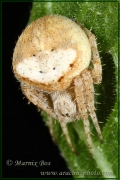
Genus Araniella
These spiders are easy to recognize by their green or greenish colour and dotted pattern on the abdomen. The species, however, are difficult to distinguish from each other. They build small orb webs in low vegetation and bushes.
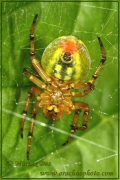
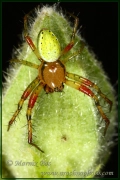
Genus Argiope
The spiders of this genus are very striking, either by their yellow stripe pattern or by their lobed abdomen. They are large spiders (sometimes more than 20 mm). This applies to the females, males are often much smaller. They make big orb webs which often contain a zigzag shaped silk band (stabilimentum), which is also present in the webs of Cyclosa and Uloborus.
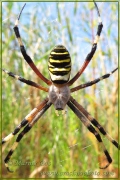
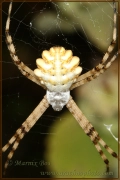
Genus Cercidia
The spiders of Cercidia have an oval abdomen which is pointed at the front end. On the front part of the abdomen they have a scutum, which is more pronounced in males. They build a small orb-web close to the ground, which can easily be overlooked. The spider normally sits in the middle of the web waiting for prey, but at the slightest disturbance it will drop to the ground. Therefore they are more likely to be found on the ground. In Europe only one species of this genus occurs.
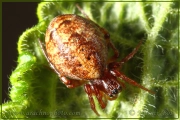
Genus Cyclosa
These spiders have a striking abdomen, posteriorly with one or four lumps. In addition, they sometimes have additional lumps on the frontside of the abdomen. They build an orb web with herein, as well as Argiope and Uloborus, a so-called stabilimentum. Remains of prey and other materials are often put there by Cyclosa . When the spider sits in between these materials it is hardly noticeable.
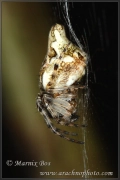
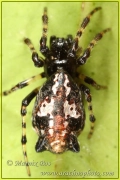
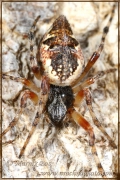
Genus Cyrtophora
Although these spiders belong to the Orb Weavers, they do not build an orb web. The web they build is horizontally orientated and looks a bit like a fishing net surmounted by a tent-like structure. It is very complex. The spider therefore spends several nights weaving her web. The web is sometimes considered a precursor of the more simple orb web, as the intention of the horizontal orientation is to capture mainly jumping insects instead of flying ones. Orb webs, however, arose later in evolution to catch the insects that went airborne. In Europe, only one species within this genus occurs.
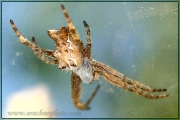
Genus Gibbaranea
All spiders within this genus have clear shoulder parts with two lumps. They build their inconspicuous orb web in trees or bushes.
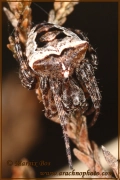
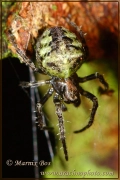
Genus Glyptogona
The genus Glyptogona contains only two species worldwide, from which one occur in Europe.
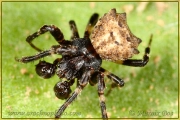
Genus Larinia
These nocturnal spiders build their orb webs in tall grass. They are small and their abdomen is always longer than wide; sometimes very elongated.
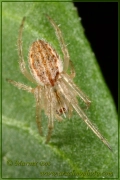
Genus Larinioides
Larinioides often builds its orb web in the proximity of water. Males have similar, but more clear markings than females, a smaller abdomen and longer legs.
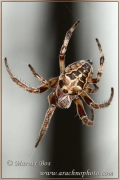
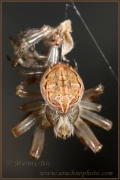
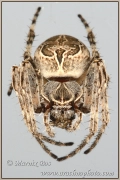
Genus Mangora
This small but unmistakable spider builds a tilted, almost horizontal orientated orb web in bushes and low vegetation. The web has a relatively large amount of spokes and turns, making it very fine-meshed. During the day, the spider usually can be found in the centre of the web.
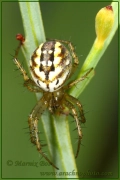
Genus Neoscona
Neoscona builds her orb web in diverse vegetation, such as heather or citrus trees, with a bag-shaped retreat in the proximity. In here the spider awaits her prey.
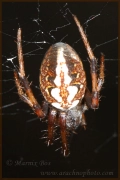
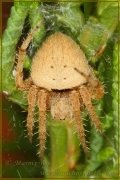
Genus Nuctenea
These spiders are very dark coloured and remarkably flat. The latter has to do with the retreat of the spider, which is located under the bark of a tree or in a narrow crack (e.g. in rocks or buildings). The nocturnal spider generally only leaves this retreat at dusk, to build an orb web.
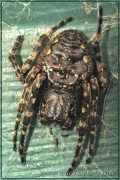
Genus Singa and Hypsosinga
The spiders of the genera Singa and Hypsosinga are also referred to as shiny spiders in the Dutch language (glansspinnen). This is due to their short-haired, high gloss body. The spiders are small and they predominantly build their orb webs in low vegetation in damp areas.
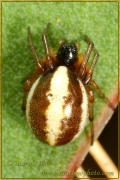
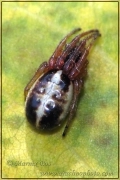
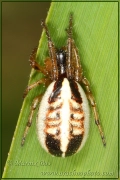
Genus Zilla
The abdomen of these remarkably small orb weavers sometimes protrudes so far over the carapace that it seems like the spider is headless as it sits in its web. The web is woven very densely, has no signal thread and no retreat. The spider sits in the centre of the web.
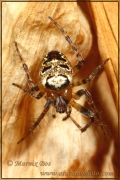
Genus Zygiella
These spiders are easily distinguished from the other Araneidae, because their web often has an open sector. The signal thread runs behind this sector to the retreat of the spider. Usually this thread is located in the same plane as the web itself. This is not the case when the angle between the signal thread and the web becomes greater than about 40° by certain environmental influences (e.g. window frames, walls, rocks or bark). In that case the spider builds a complete orb web. Young spiders build a complete orb web as well.
